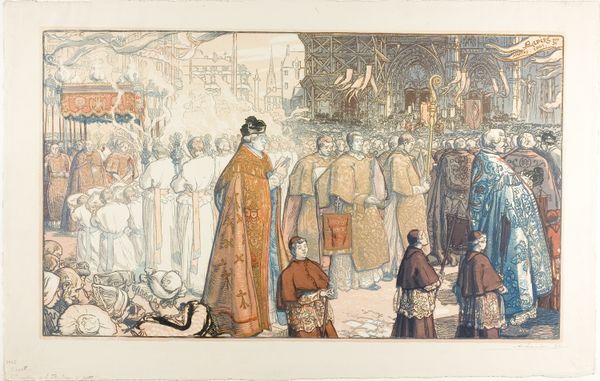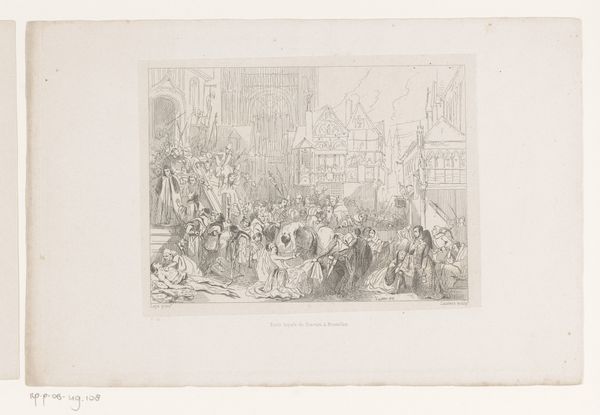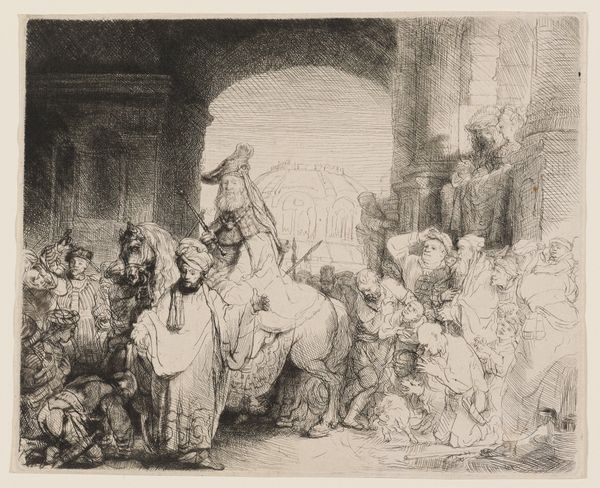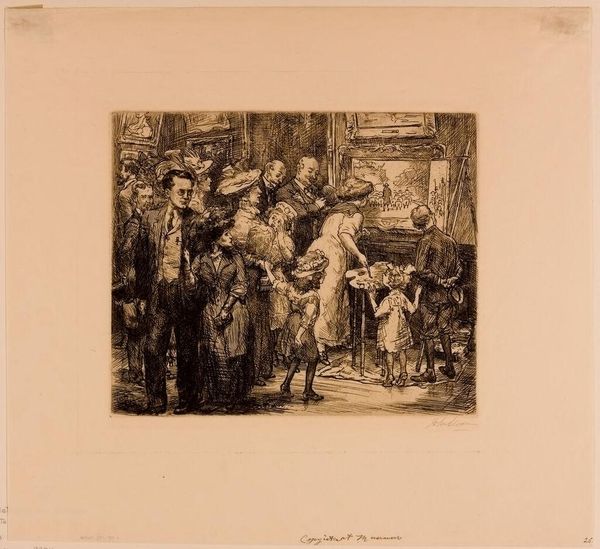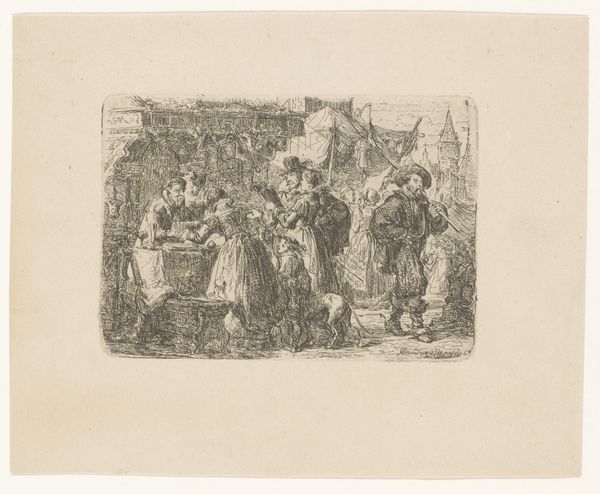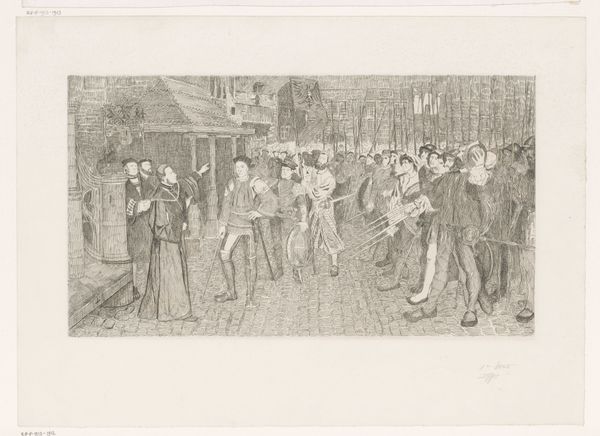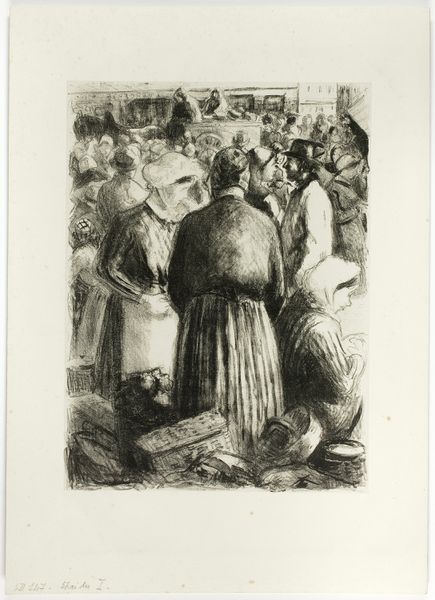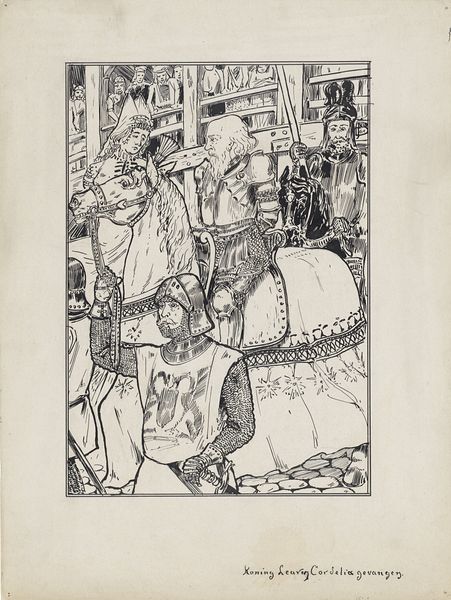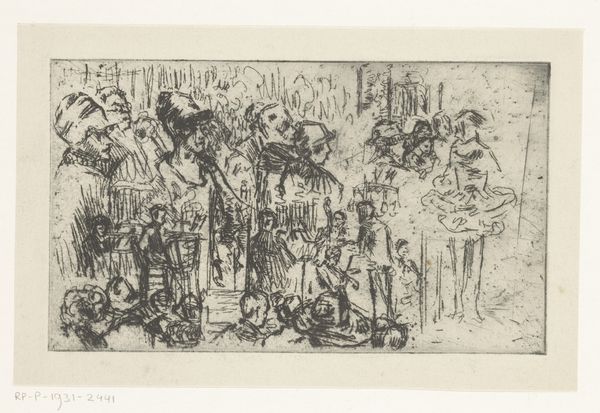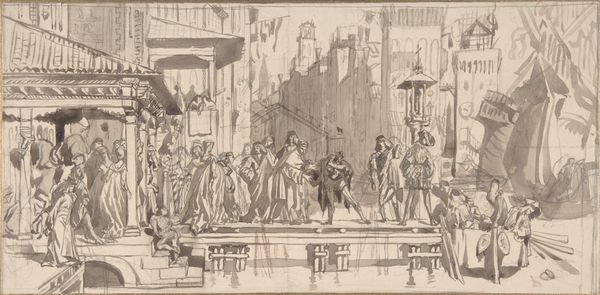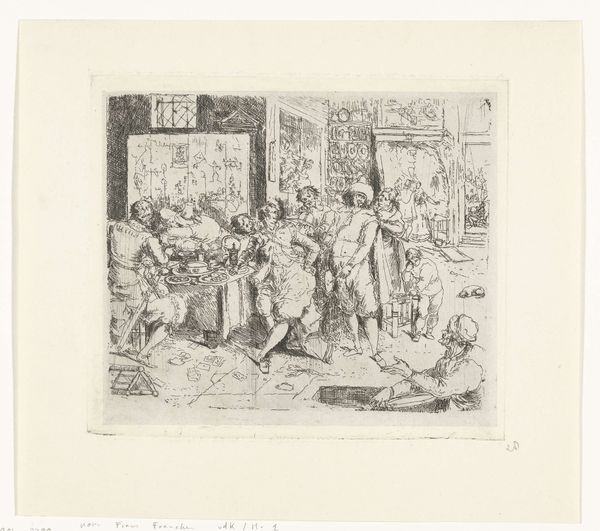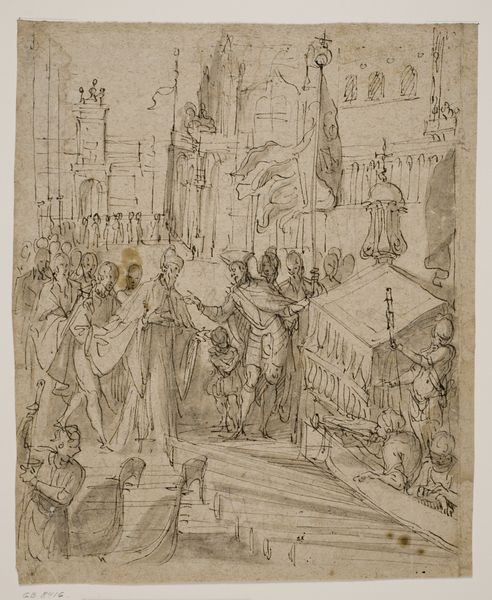
Dimensions: 323 × 534 mm (image); 486 × 661 mm (sheet)
Copyright: Public Domain
Curator: Looking at Auguste-Louis Lepère’s etching from 1901, entitled "The Corpus Christi Procession, Nantes," I'm immediately struck by the texture. Editor: Yes, it's almost vibrating with detail. All that cross-hatching! Notice how Lepère orchestrates our gaze – from the resting figures in the foreground to the stately procession leading to the grand cathedral in the background. Curator: Absolutely. The high contrast created by the black ink on the paper serves to isolate individual forms, while all of that combined creates a collective representation of social status. I am drawn to how the artist renders depth through the careful modulation of tone and detail. The cathedral’s scaffolding, for instance, suggests both progress and perhaps also hints at the temporal nature of even the most revered institutions. Editor: Considering the political climate of France at the turn of the century, marked by anti-clerical sentiments, could this depiction of a grand Corpus Christi procession in Nantes be interpreted as Lepère's comment on the role of the Church within French society? Is it a nostalgic nod to tradition, a critical observation, or a detached documentation? Curator: It certainly invites such historical and political inquiry. But also think of how Lepère focuses intently on light and shadow to create the illusion of spatial depth. He uses different linear strokes and hatching techniques, achieving such a dynamic sense of movement within a static medium like etching. He coaxes us to move forward! Editor: I would argue this perspective stems from Lepère's broader engagement with portraying modern life and urban experiences, positioning him within a lineage of artists chronicling social and cultural practices through a critical lens. It raises the questions, for whom are such religious spectacles actually staged, and how does power manifest in public? Curator: Indeed. And beyond the socio-political implications, the pure artistry lies in Lepère’s deft handling of the etching technique. The density of lines near the clergy compared to the ethereal depiction of the city shows a manipulation that I cannot stop admiring. Editor: Well, from the details of material representation to the broader view of political agenda, I agree it has been a thought-provoking analysis of Lepère’s piece. Curator: Yes, a successful exercise in seeing how form and content intertwine so intriguingly!
Comments
No comments
Be the first to comment and join the conversation on the ultimate creative platform.
